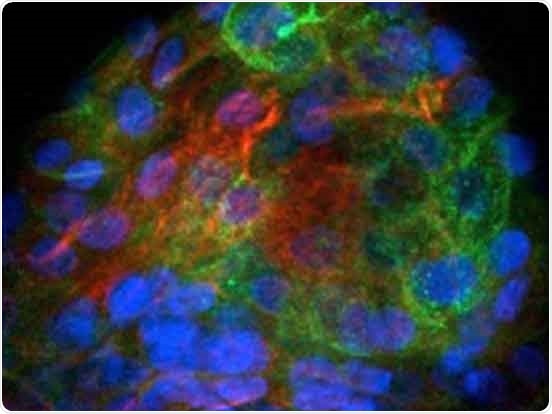Biochemically defined and animal-free – Mussel Adhesive Protein based matrix (MAPtrix™) from AMSBIO provides a highly defined and controllable recombinant extracellular matrix (ECM) for cell culture, which can be tailored to the specific needs of particular cell types.

Image credit: AMS Bio
Low cost and ready-to-use – MAPtrix™ produces a reliable and reproducible protein coating on a wide variety of surfaces including glass, plastic and biological surfaces. Used as a replacement for traditional basement membrane extracts in drug delivery, surface-modified medical device, stem cell and tissue engineering scaffold applications – MAPtrix™ delivers superior cell plating efficiency, improved cell morphology and enhanced cell proliferation.
Mussel Adhesive Protein is a highly desirable substrate for use in a variety of biological and medical applications because of its strong wet adhesive, non-toxic, biodegradable and low immunogenic properties.
MAPtrix™ technology works by incorporating small individual motifs from ECM proteins into recombinant proteins with a backbone of Mussel Adhesive Protein to attach to the substrate, thereby presenting the ECM motif for cultured cells to attach to. Incorporating mix-and-match genetically incorporated bioactive peptides – MAPtrix™ provides an in-vivo-like surface structure, that mimics the native extracellular environment, enabling the maintenance of cells under serum and feeder-free conditions.
AMSBIO also offer MAPtrix™ Screen arrays to help scientists to screen a range of ECM motifs to find which ones their cells will adhere to. They can then use these motifs to tailor a defined microenvironment in 2D, or combine the MAPtrix biomimetic with a Polyethylene glycol (PEG) crosslinker to form a hydrogel (MAPtrix™ Hygel) for 3D cell culture.
For further information on MAPtrix™ animal-free recombinant ECM, please visit https://www.amsbio.com/maptrix-recombinant-ecm/ or contact AMSBIO on+44-1235-828200 / +1-617-945-5033 / [email protected].
Posted in: Life Sciences News
Tags: Cell Culture
Source: Read Full Article
